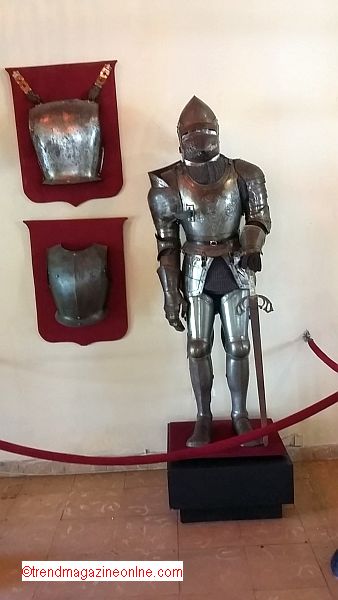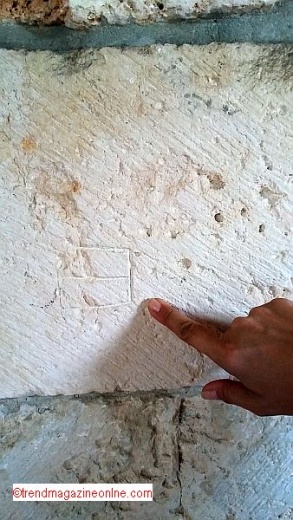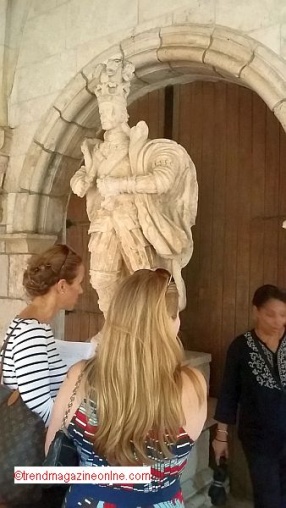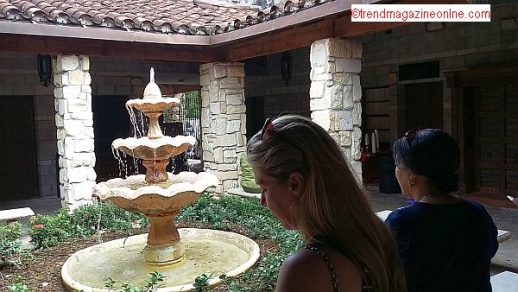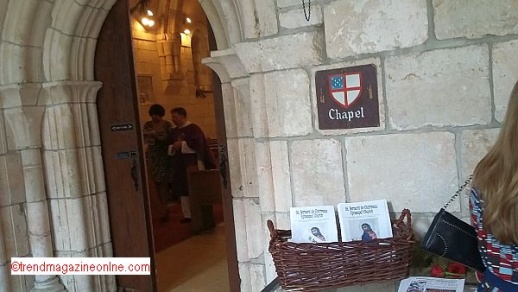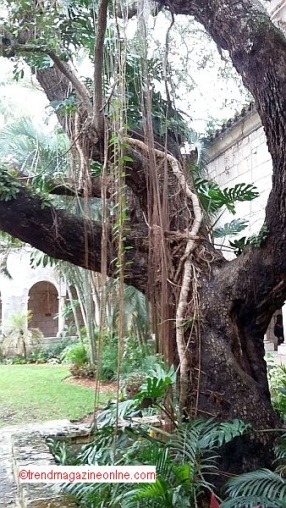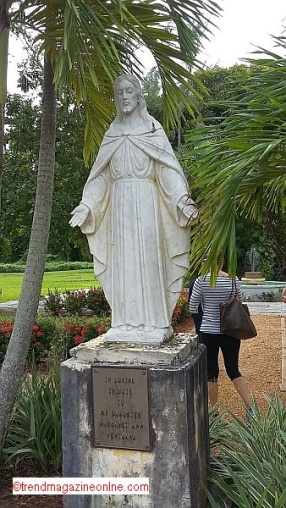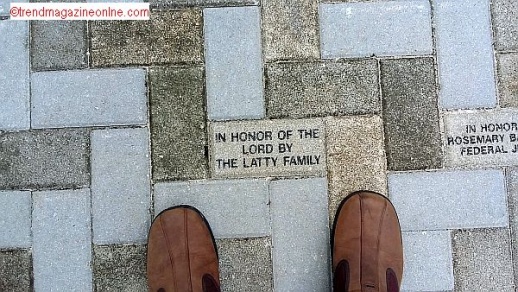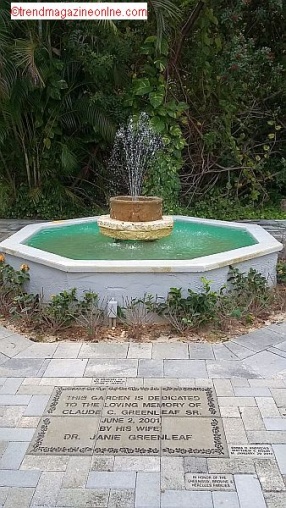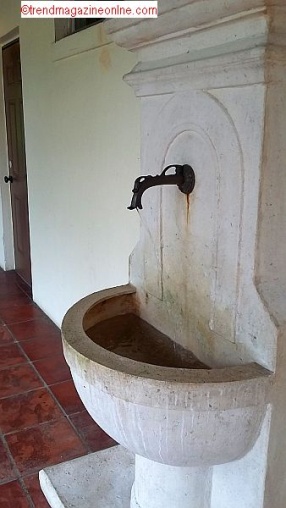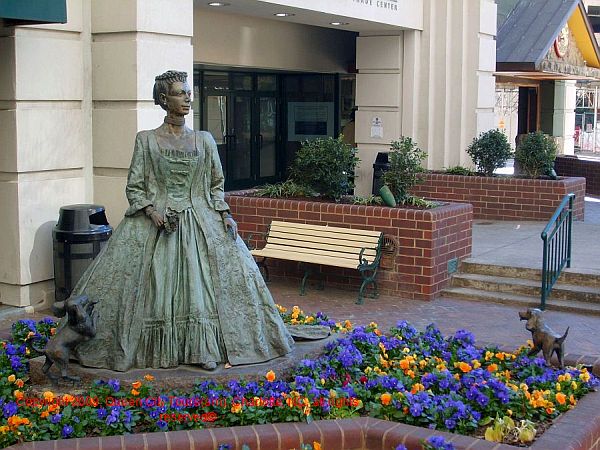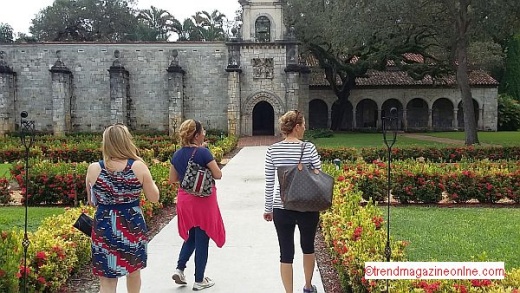 I first learned
of this place years ago via watching a very interesting television video
documentary while living in the Carolina's. I actually had plans to
visit one day to get a bird's eye view of this attraction as a direct result of
the video piece. Fast forward years later and as faith would have it; this site
was placed on the itinerary for a Tour Guide Certification Course that I
was taking at Miami-Dade Community College in late 2015.
I first learned
of this place years ago via watching a very interesting television video
documentary while living in the Carolina's. I actually had plans to
visit one day to get a bird's eye view of this attraction as a direct result of
the video piece. Fast forward years later and as faith would have it; this site
was placed on the itinerary for a Tour Guide Certification Course that I
was taking at Miami-Dade Community College in late 2015. 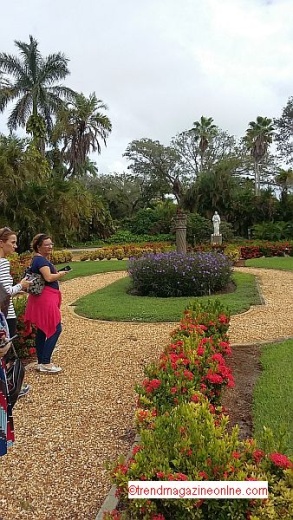 We were
fortunate to have a site expert (Ms. Sonya M. Washington) personally guide us
around the property and give us a detailed tour of the buildings and grounds.
We were
fortunate to have a site expert (Ms. Sonya M. Washington) personally guide us
around the property and give us a detailed tour of the buildings and grounds.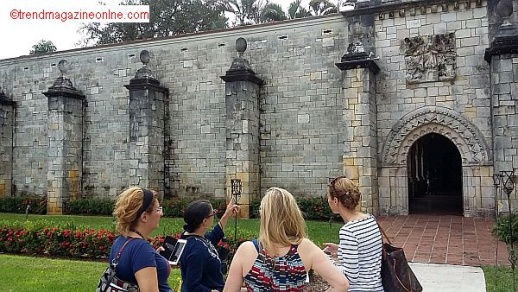 Although
relatively new to South Florida, this attraction dates back to 1141 A.D.
(after death) when it was completed and dedicated to the Virgin Mary and
named "The Monastery of Our Lady, Queen of the Angels." The name was
officially changed to St. Bernard de Clairvaux [clear valley] (1090-1153)
on Friday January 18, 1174, after the now famous monk was
canonized by Pope Alexander III (c. 1100 - 1181).
Although
relatively new to South Florida, this attraction dates back to 1141 A.D.
(after death) when it was completed and dedicated to the Virgin Mary and
named "The Monastery of Our Lady, Queen of the Angels." The name was
officially changed to St. Bernard de Clairvaux [clear valley] (1090-1153)
on Friday January 18, 1174, after the now famous monk was
canonized by Pope Alexander III (c. 1100 - 1181). 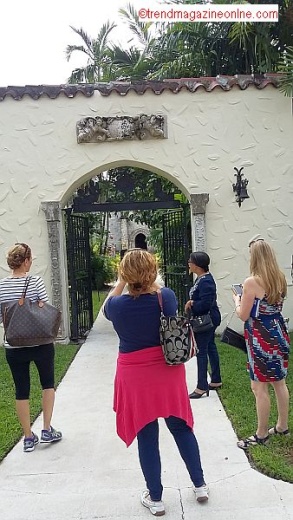 Its purpose was to
house the monks that served the attached church which dates back to 1133
-- in Sacramenia Spain -- and is still there today. They were called Cistercian
(religious order of monks and nuns) who occupied the monastery for nearly 700
years. The Cloisters (monastery) were seized, sold, and converted
into a granary and stable after a social revolution in the 1830's.
Its purpose was to
house the monks that served the attached church which dates back to 1133
-- in Sacramenia Spain -- and is still there today. They were called Cistercian
(religious order of monks and nuns) who occupied the monastery for nearly 700
years. The Cloisters (monastery) were seized, sold, and converted
into a granary and stable after a social revolution in the 1830's.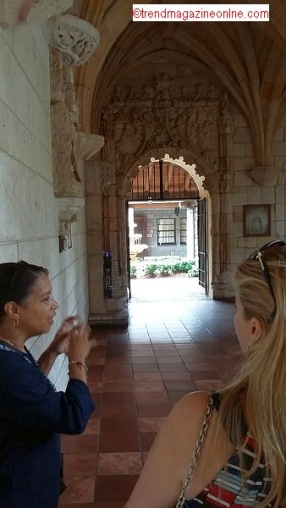 The Cloister's
and out buildings was then purchased over a Century later by wealthy publisher
William Randolph Hearst (1863 - 1951) in 1925 for an undisclosed
amount. He was mocked in the now iconic movie Citizen Kane (1941) by
famed Director Orson Welles (1915 - 1985), and is the grandfather of the
reportedly notorious bank-robber and heiress Patty Hearst who recently
(2015) appeared at a Westminster Kennel Club Dog Show in New York.
The structures were then taken apart piece-by-piece and packed away in some 11,000
wooden crates, and shipped to the United States.
The Cloister's
and out buildings was then purchased over a Century later by wealthy publisher
William Randolph Hearst (1863 - 1951) in 1925 for an undisclosed
amount. He was mocked in the now iconic movie Citizen Kane (1941) by
famed Director Orson Welles (1915 - 1985), and is the grandfather of the
reportedly notorious bank-robber and heiress Patty Hearst who recently
(2015) appeared at a Westminster Kennel Club Dog Show in New York.
The structures were then taken apart piece-by-piece and packed away in some 11,000
wooden crates, and shipped to the United States. 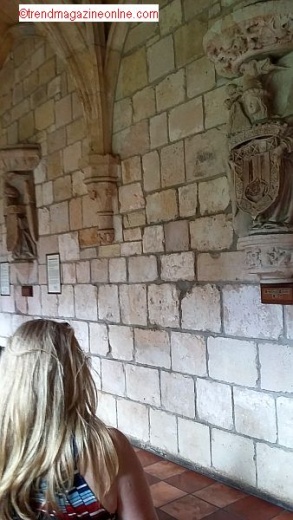 Upon arrival they
were quarantined by order of the United States Department of Agriculture
due to an outbreak of the hoof and mouth (also known as hand-foot-and-mouth)
disease in Segovia Spain (St. Bernard original location), which
causes sores to develop about those body parts as well as sometimes the
buttocks and legs. The crates were broken open and the hay burned to prevent
the spread of the disease; unfortunately, the stones were not properly placed
back into their proper numbered boxes.
Upon arrival they
were quarantined by order of the United States Department of Agriculture
due to an outbreak of the hoof and mouth (also known as hand-foot-and-mouth)
disease in Segovia Spain (St. Bernard original location), which
causes sores to develop about those body parts as well as sometimes the
buttocks and legs. The crates were broken open and the hay burned to prevent
the spread of the disease; unfortunately, the stones were not properly placed
back into their proper numbered boxes.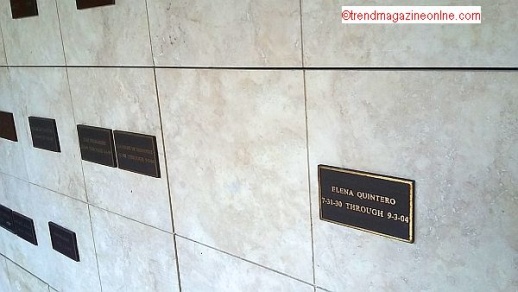 Mr. Hearst was forced to sell the collection at an auction during the Great Depression
Era (1929 - 1939) and in 1952 -- one year after his death -- it was
purchased by Cincinnati, Ohio, businessmen Mr. William
Edgemon and Mr. Raymond Moss to be used as a tourist attraction.
They had been boxed in storage in New York City for 26 years and
were transported via ship to Port Everglades at a cost of $60,000
(USD). The Cloisters were unscrambled and put back together again at its
current location on North Miami Beach after 19 months and nearly $1.5
Million (USD).
Mr. Hearst was forced to sell the collection at an auction during the Great Depression
Era (1929 - 1939) and in 1952 -- one year after his death -- it was
purchased by Cincinnati, Ohio, businessmen Mr. William
Edgemon and Mr. Raymond Moss to be used as a tourist attraction.
They had been boxed in storage in New York City for 26 years and
were transported via ship to Port Everglades at a cost of $60,000
(USD). The Cloisters were unscrambled and put back together again at its
current location on North Miami Beach after 19 months and nearly $1.5
Million (USD).
